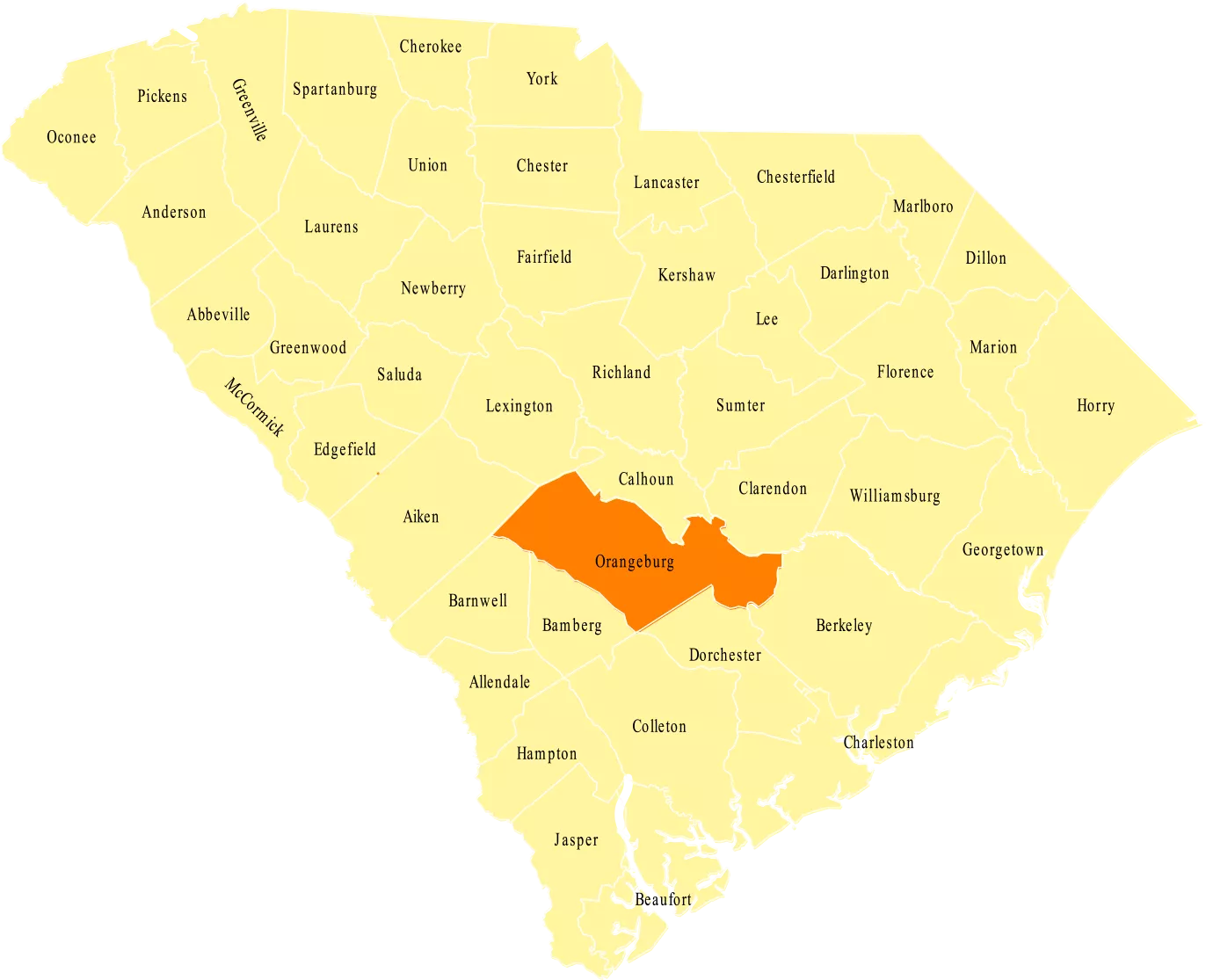
Photo
Marie Brailey with her son, Willie Van
Orangeburg County was founded as Orangeburg District in 1769. The county and county seat’s namesake was William IV, otherwise known as the Prince of Orange. Notable residents include Tony, Grammy, and Emmy nominee Eartha Kitt.
The lands now known as Orangeburg County were first settled by Swiss and German farmers in the early 18th century, with English settlers from the Lowcountry arriving soon after. In the 19th and 20th centuries, the district became smaller as lands were taken to create the Barnwell and Lexington Districts as well as Aiken and Calhoun counties.
Both the Revolutionary War and the Civil War had an impact on the county. The last battle of the Revolutionary War fought in South Carolina, the battle of Eutaw Springs, occurred in Orangeburg County. Additionally, Sherman’s troops traveled through the county during the Civil War. Orangeburg County also made history as the home of South Carolina’s first railroad junction in 1840. Unfortunately, the county is likely best known for the Orangeburg Massacre, when South Carolina police killed three South Carolina State College students involved in a civil rights demonstration in 1968.
In the 19th century, large cotton plantations began to appear in Orangeburg County, and cotton remains one of the main crops grown in the area. Recently, the economy has experienced growth due to its location between Columbia and the port of Charleston. Record-breaking development has occurred in industry, especially manufacturing, as well as retail.
About Eartha. Accessed June 10, 2016. http://www.earthakitt.com/eartha/
Economic Development. Accessed June 10, 2016. http://www.orangeburgchamber.com/
Welcome to Orangeburg County. Accessed June 10, 2016. http://www.orangeburgcounty.org/

Photo
Anti-Klan parade and poster in Orangeburg. Todd Houston photo, February 1987. Courtesy of "The State" newspaper.
Photo
The Orangeburg County Courthouse, as it appeared with the Confederate monument on the square, in 1909. Courtesy of the South Caroliniana Library.
Photo
"Orangeburg Courthouse" survived Sherman's march through South Carolina, sketched here for "Leslie's Illustrated Magazine" on February 13, 1865. Courtesy of the South Caroliniana Library.
Photo
Plat of Orangeburg, around 1800. The table of reference on the back of the plat identifies the letters as follows: "a. Court House b. Goal c. Ephraim Mitchell's House d. D. Bruce's house e. Public...